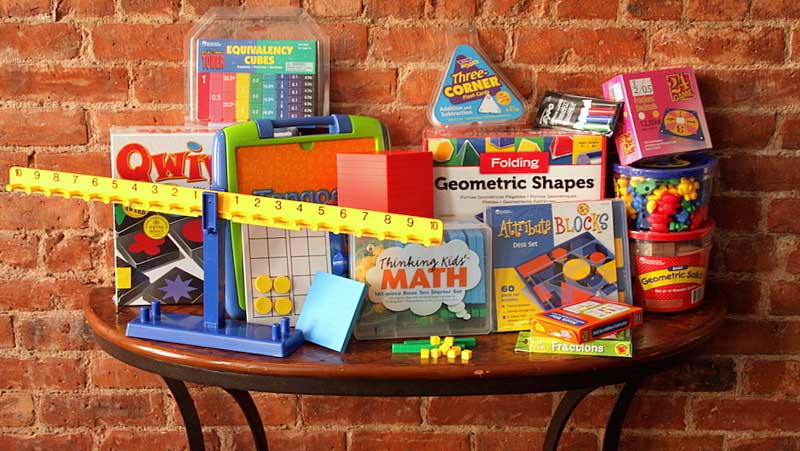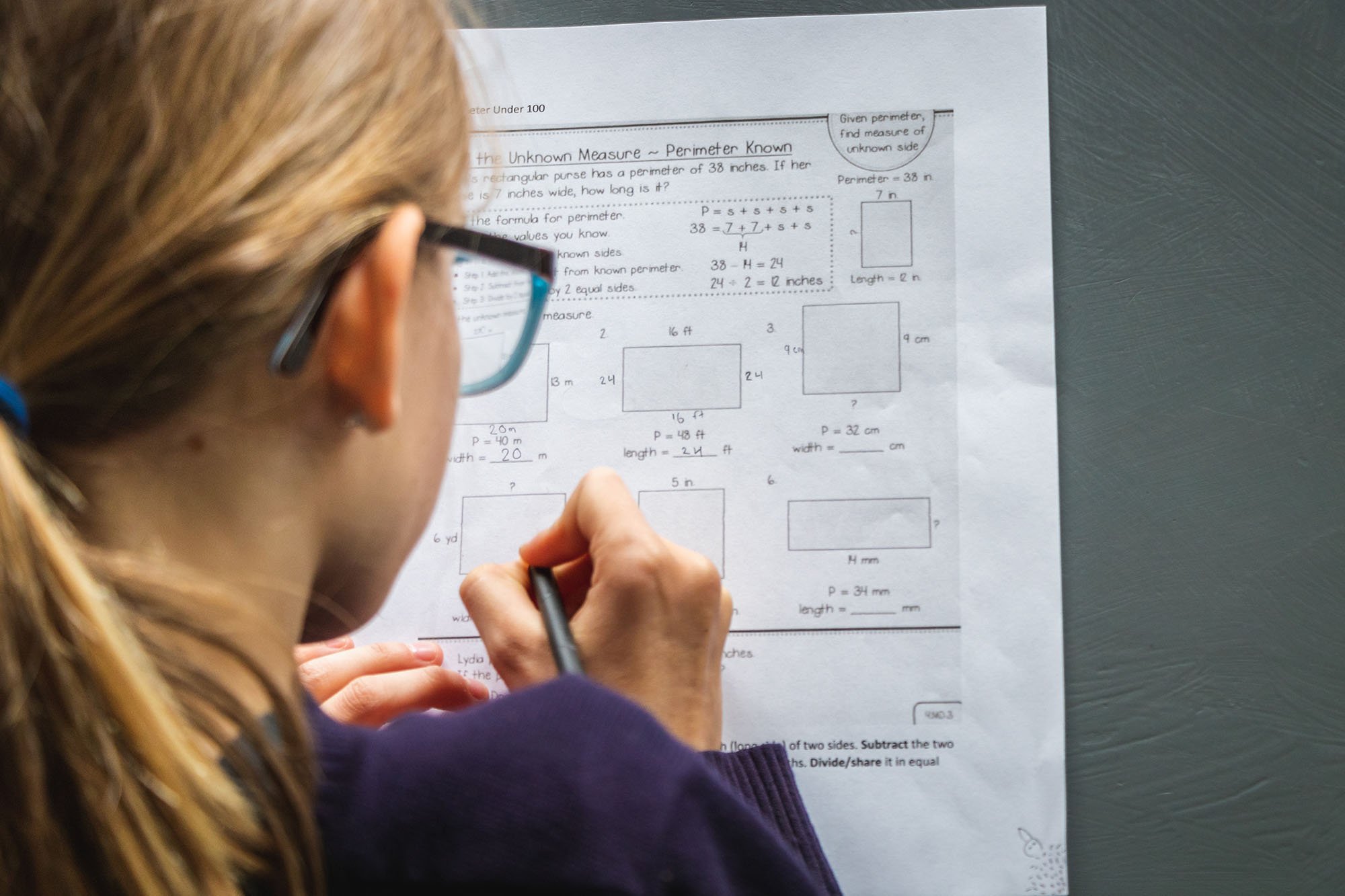At My Learning Springboard, our Math Specialists and Learning Specialists support students of all ages from preschool through high school and beyond. We focus on developing conceptual understanding, logical reasoning, and problem solving strategies along with strong number sense, mental math skills, and mathematical reasonableness. Moreover, we tailor instruction to the meet the needs of all types of learners, including students with learning challenges, such as ADHD or dyscalculia, and/or anxiety related to math performance.
We help students achieve success by taking an individual’s learning profile into careful consideration in order to differentiate our instructional approach while also choosing materials that complement the existing school program. For younger learners, we typically find success by first introducing concepts concretely, then progressing to pictorial representations, and finally moving into the abstract representation of math problems. We may employ a similar sequence for older learners if they encounter conceptual challenges in more advanced math.
Our Math Specialists often conduct comprehensive math diagnostic assessments at the beginning of our work together in order to fully assess a student’s performance level. We use these types of diagnostic tools when addressing both remediation and acceleration in order to develop an appropriate and targeted instructional plan. Our approach to diagnostic work is differentiated depending on the particular circumstance and purpose.
Our diagnostic tools, preK through 12, are informed by the National Council of Teachers of Mathematics (NCTM) Principles and Standards, Common Core State Standards, and NYS Next Generation Learning Standards; and we utilize materials and research from known math experts, including Kathy Richardson, Marilyn Burns, and Dr. John A. Van de Walle. Our math work is also informed by the CTP content standards from the Educational Records Bureau (ERB) and IB Standards, as appropriate, for students at schools making use of these assessment tools and/or curricula.
Popular Math Programs
- Art of Problem Solving
- Singapore Math
- enVision Mathematics
- Everyday Math
- Exeter Math
- Harcourt Math
- Saxon Math
- Stern Math
- Eureka Math
- TERC Investigations
- Bridges in Mathematics
Remediation or Acceleration: preK-5
- Counting and Cardinality
- Basic Facts and Computation (math fluency), including addition, subtraction, multiplication and division
- Number Operations and Algebraic Thinking, including fractions and long division
- Measurement and Data (representation and analysis), including graphing
- Geometry
- Problem Solving and Reasoning
Standards for Mathematical Practice
- Make sense of problems and persevere in solving them.
- Reason abstractly and quantitatively.
- Construct viable arguments and critique the reasoning of others.
- Model with mathematics.
- Use appropriate tools strategically.
- Attend to precision.
- Look for and make use of structure.
- Look for and express regularity in repeated reasoning.

Math Centers and Math Manipulatives
We also help families to create math centers in their homes by selecting age-appropriate math manipulatives and resources that support classroom and tutoring instruction. Parents and/or caregivers can work with us to learn how to use these resources more comfortably, too. Since students are used to accessing these materials in their classrooms, it makes sense to have them available at home when completing homework or exploring mathematical ideas. Materials are divided by primary grades (K-2) and intermediate grades (3-5), and these materials may benefit older learners as well. Having a complete math center in your home is a strategic investment in your child’s math education.
Please contact our office for more information.
 Following several years of significant operational disruptions, schools are focused on
Following several years of significant operational disruptions, schools are focused on  The thing about math is that when it makes sense it’s easy. Most tutoring of course is aimed at making the math make sense in the first place. However, for kids who find the math in school to be too simple and too straightforward, the lack of challenge and novelty can become frustrating and even demotivating. For any student, the goal is for the learning to be appropriately challenging, and that requires flexibility, creativity, and
The thing about math is that when it makes sense it’s easy. Most tutoring of course is aimed at making the math make sense in the first place. However, for kids who find the math in school to be too simple and too straightforward, the lack of challenge and novelty can become frustrating and even demotivating. For any student, the goal is for the learning to be appropriately challenging, and that requires flexibility, creativity, and  Do you remember fourth grade? You were not yet confronting middle school angst but no longer a little kid in your elementary school. You likely were not worried about your overflowing inbox, catching up on laundry, or figuring out dinner plans back then. What were you worried about? Think back. Ahh, that’s right. Your math homework. You likely just learned how to multiply two digit numbers. Multiply, carry, multiply, add, shift to the left, add, repeat. So many steps and, while it got the job done, you had no idea what you were doing or why you were doing it. It was just the way to solve multiplication problems. The standard algorithm. And, for something so complicated, once you memorized the computation patterns, it was pretty simple. No one mentioned
Do you remember fourth grade? You were not yet confronting middle school angst but no longer a little kid in your elementary school. You likely were not worried about your overflowing inbox, catching up on laundry, or figuring out dinner plans back then. What were you worried about? Think back. Ahh, that’s right. Your math homework. You likely just learned how to multiply two digit numbers. Multiply, carry, multiply, add, shift to the left, add, repeat. So many steps and, while it got the job done, you had no idea what you were doing or why you were doing it. It was just the way to solve multiplication problems. The standard algorithm. And, for something so complicated, once you memorized the computation patterns, it was pretty simple. No one mentioned